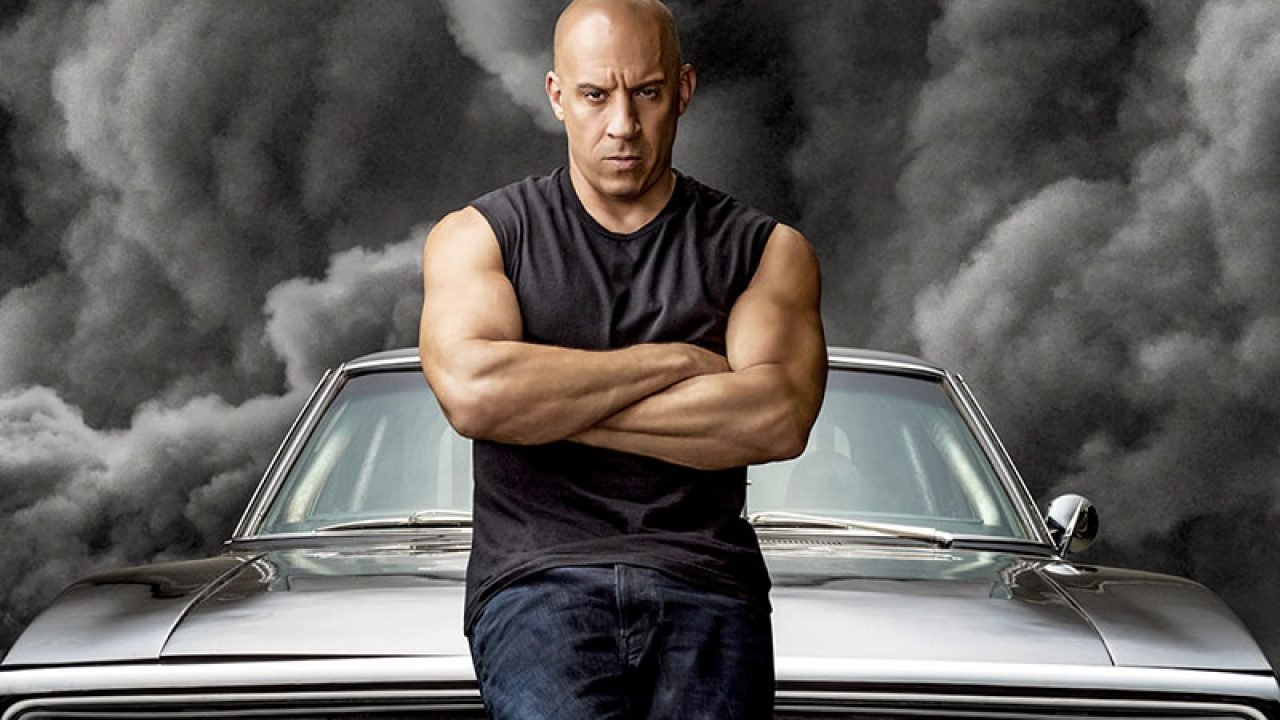I hadn’t seen a single Fast & Furious movie before I had the opportunity to see F9, so in the 72 hours before I saw the new one, I binge-watched all nine preceding movies in the franchise. Cars, family, and a growing disrespect for the laws of physics are all I know now. As the leading expert on the Fast & Furious franchise, allow me to unearth the lede: F9 is the best of them all.
That might have something to do with a shakeup behind the scenes. Chris Morgan, the screenwriter who wrote every Fast & Furious movie from Tokyo Drift to Hobbs & Shaw, has stepped back from the franchise for the first time in fifteen years. Replacing him on writing duty are Justin Lin, the movie’s director, and Daniel Casey, the writer behind the 2016 sci-fi film Kin. Casey’s an inspired hire—like F&F, Kin was an actiony romp held together by close family bonds. But Kin was also a spectacular failure: it spent most of its runtime groveling for a sequel to itself and forgot to be an actual movie. It was a dismal attempt at starting a franchise. With F9, though, Casey gets to hop onto an already established franchise, and he seizes the day like a kid locked in a toy store.
Ever since Fast & Furious 6, the F&F series has been trying to up the drama by complicating the theme of family, but F9 is the first entry to truly pull that off. The sixth movie tried adding the Shaw family, a sort of evil reflection of the Fast Family, but their presence did nothing to make the protagonists seem closer by comparison. They were just a new batch of eccentric villains (which is fine!). And The Fate of the Furious infamously tried turning the family on its head by having Dom turn against them, but the reason was too flimsy—a real family would’ve talked it out before betrayal was the only option. There was no genuine drama there. But by making Dom’s fractured relationship with his brother the focus of F9, Casey and Lin strike gold.
It’s more than the franchise hitting the jacked meathead trifecta by adding John Cena to the cast. In revealing an evil Toretto, Casey and Lin introduce a family link that was successfully broken, a tragedy that never came close to sticking in any of the nine previous films. You can throw around the word “family” as much as you’d like, but it only starts feeling meaningful if the collapse of the family is on the table. It’s only good if it can be gone. Dom and his brother’s hate for one another casts doubt on whether Dom will take his “family is forever” ethos seriously, and suddenly all the mentions of keeping family together feel like ‘will they/won’t theys’ instead of givens. Not since Dom realized Brian was a cop in the original The Fast and the Furious had one of these movies dredged up an authentic sense of drama. In a feat of giving a damn about the screenplay for once, Casey and Lin give the series’ trademark soap opera new weight. F9 even relitigates plot threads from the original film—the most grounded and, before F9, strongest in the series—anchoring F9 to something that feels real while cars are flying into space elsewhere.
The script’s an improvement, but it doesn’t shed all the franchise’s worst qualities. The dialogue is still abysmal and the structure still lopsided—and these issues compound each other this time around. F9 is a veritable parade of every character that’s ever appeared in the series, transforming the series’ episodic structure into an endless merry-go-round of just-in-time character introductions and revisited locations. Even within the context of the series’ loose grip on logic, the story is shot up with plot holes. F9 tries to remedy the situation with the ol’ F&F strategy of making half the dialogue shameless exposition. Characters will sit down to hash out their backstories for minutes on end, and the obvious details that the script speaks aloud are so-bad-it’s-good hilarious. When Tyrese mentions F8 villain Cipher to Dom, he describes her to him as “the woman who killed the mother of your child.” Does he think Dom’s forgotten? Thankfully, there’s a lot of intentional humor too, and most of it lands. For reasons deliberate and otherwise, F9 is an extremely funny movie.
And here’s a victory worth celebrating: it’s the least misogynistic entry in the saga! It seems Universal listened after Michelle Rodriguez threatened to leave the franchise over its rampant sexism. It’s not like the thing’s feminist now—besides some scraps-to-the-crowd, Bechdel-test-passing conversations tossed in, the women of F&F are still barely fleshed out—but their flesh is of less leering concern to the camera. Vaulting above a very low bar, F9 is the first movie in the series to not feature a single shot of a woman’s butt. The boys are growing up.
And, of course, the action. Each sequel has upped the ante on its set pieces, but Furious 7 marked an overreliance on CGI after F6 nearly perfected the balance between practical and implausible. But with Justin Lin back in the director’s seat for the first time since then, F9 reaches the peak of balls-to-the-walls insanity. The ideas themselves are a blast—cars swinging across ravines and rocketing into Earth’s atmosphere are just the beginning—but watching them be pulled off is exhilarating. The action that Lin sculpts with practical effects is virtuosic. There may be no stakes anymore after the previous films showed that anything is survivable—an impossibility F9 does wisely to mock—but the sheer wonder of seeing the unreal look real is entertainment enough. Once the F&F team finds editors that can pace story beats as well as they organize car chases, we could have the first great Fast & Furious on our hands. But for now, F9 is an acceptable pinnacle.
★★★ (3/5)




